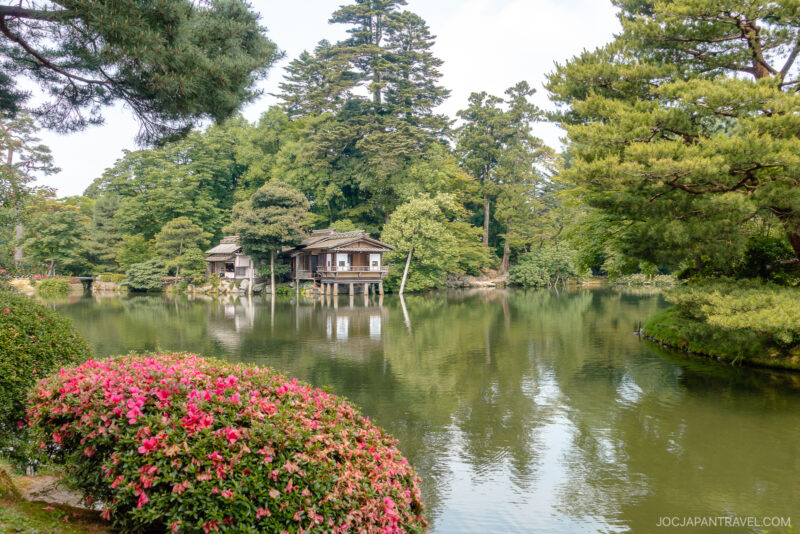This post may contain affiliate links. Please read our disclosure policy.
Step into Shikinaen, a peaceful garden retreat once reserved for royalty and Chinese envoys, blending Okinawan, Japanese, and Chinese aesthetics.

A Garden Built for Diplomacy and Rest
Shikinaen was built in 1799 as a secondary residence for the Ryukyu royal family and a ceremonial space for welcoming Chinese envoys. These visits were vital for maintaining trade and diplomacy during the Ryukyu Kingdom’s close relationship with China.
Although much of the site was destroyed during the Battle of Okinawa in World War II, a 20-year restoration project brought it back to life using original records. In 2000, it became part of the UNESCO World Heritage designation for the Gusuku Sites and Related Properties of the Kingdom of Ryukyu.
Highlights of Shikinaen

The Central Pond and Bridges
At the center of the garden is a large pond, bordered by coral limestone and tropical greenery. A graceful Chinese-style stone bridge crosses to a small island, where the hexagonal Rokkakudo pavilion sits quietly among the trees.
On the opposite shore is the Udun, the former state residence, once used to host formal ceremonies and banquets.
The Seiden Hall and Garden Paths
Past the pond stands the Seiden, the garden’s main ceremonial hall. Its red-tiled roof and curved eaves reflect Chinese architectural influence.
We especially enjoyed the winding paths. Each turn revealed something different, a small waterfall, a cluster of stones, or seasonal flowers. Even in Okinawa’s warm climate, the garden was designed to highlight the rhythm of the seasons.
A Peaceful Break From the Crowds

Unlike the busy grounds of Shuri Castle, Shikinaen felt peaceful and open. Our children loved exploring the bridges and trails, while we appreciated the quiet beauty and meticulous design. It took us about an hour to see everything.
How to Get to Shikinaen
Bus
- Take bus number 2, 5, or 14. These routes operate frequently and are a good way to get to the garden. Get off at the Shikinaen Mae (識名園前) bus stop, about 20-30 minutes.
Taxi
- About ¥1,200–¥1,600 and 10 minutes from central Naha.
Pro Tip: Combine a visit to Shuri Castle and Shikinaen in the same half-day, they’re only a short walk or drive apart.
Should You Visit Shikinaen?
Yes, especially if you’re already visiting Shuri Castle or are interested in Okinawan history. Shikinaen is not large or dramatic, but its quiet atmosphere and harmony of cultural influences make it worth a visit. We liked the mix of Chinese and Japanese design, the seasonal plantings, and the slower pace the garden encouraged.



